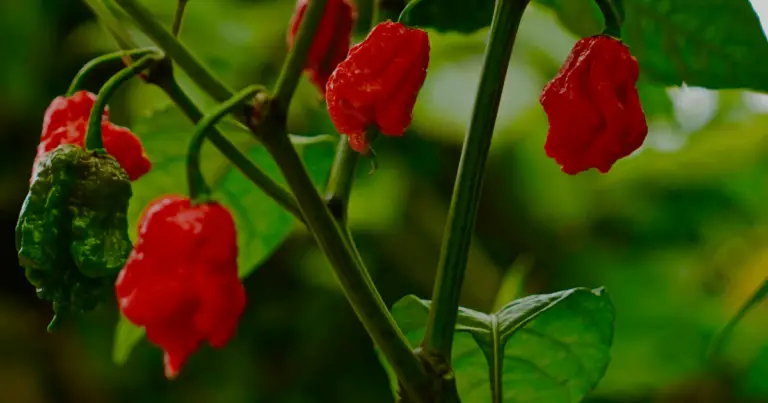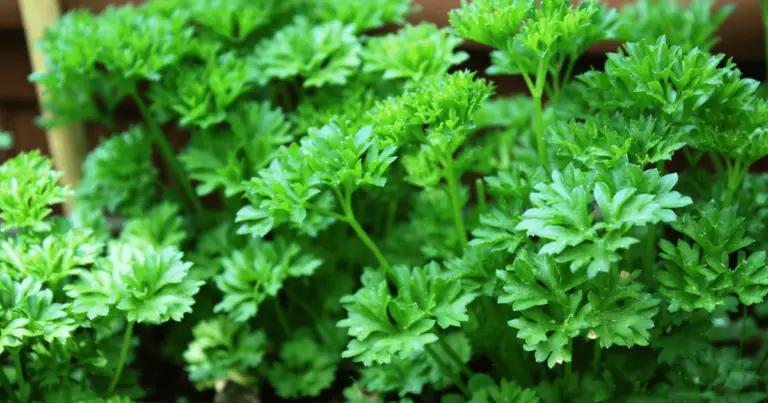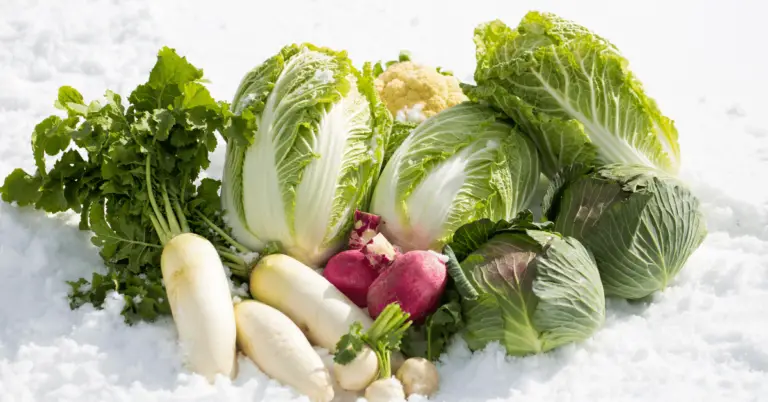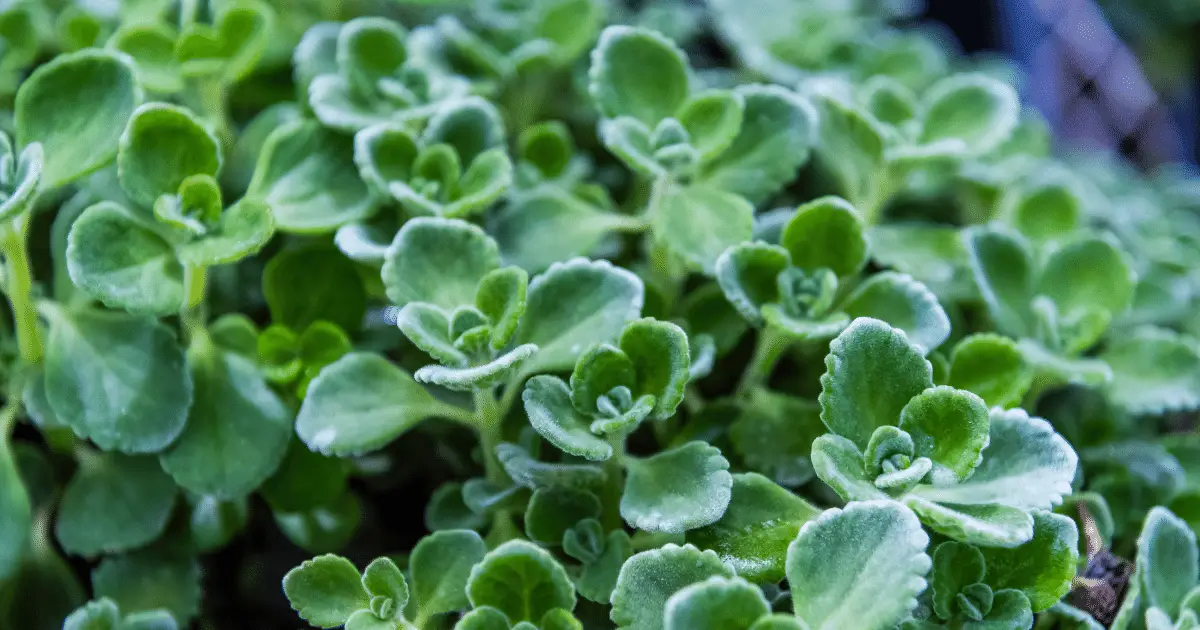
How To Grow Cuban Oregano Plants
What Is Cuban Oregano
Well, it’s not really oregano at all but it does taste very similar.
The Cuban Oregano Plant, Plectranthus amboinicus, is a perennial herb of the Lamiaceae family, also referred to as the mint, deadnettle or sage family.
It is commonly known or referred to as Spanish Thyme, Mexican Mint or Indian Borage but is not actually thyme, borage or even a true oregano.
Cuban Oregano displays some of the characteristics common within the Lamiaceae family with thick, fuzzy leaves of a greyish green colour and can produce trumpet shaped pink, white or lavender coloured flowers. The leaves produce a pungent and pleasant aroma and when used in cooking the flavour is very similar to Mediterranean Oregano but much stronger so care needs to be taken to reduce the amount used as it is easy to allow it to overpower a dish.
Cuban Oregano Plants are going to grow to an absolute maximum of about 18 inches and when planted out will grow and spread slightly to form some ground cover.
Planting Cuban Oregano
Cuban Oregano will grow well in the ground, containers or even in hanging baskets where it will form itself into a semi-trailing plant.
The plant is sensitive to frost though so we would only advise planting out if you live in an area that is warm throughout the year. For all other climates the best choice is to plant in containers so that you can change position in the garden throughout the seasons and then bring it indoors as the temperature drops.
Plant in well drained soil and aim for partial to full sun but be cautious as the leaves can be susceptible to burning if the sun is too strong.
You can use a variety of methods to propagate Cuban Oregano.
From Seed – Plants can absolutely be grown from seeds but my experience has been that seeds can be a little temperamental, resulting in ‘hit and miss’ germination. Another issue I have encountered, which you can see by customer reviews of some seeds, is that you run the risk of not actually ending up with what you’re hoping for.
If you decide to plant seeds then you want to buy them from a trusted supplier and ideally you want to have a heat mat or heated propagator.
Press the seed lightly into the surface of moist soil either in individual seed pots or, if in a non-divided tray, space the seeds about 1 inch apart.
Maintain a soil temperature of about 70 degrees in a bright location and keep the soil slightly moist.
Germination should occur anywhere from 21 – 30 days.
From Seedlings – By far the easiest and most reliable way to grow Cuban Oregano, or any number of plants for that matter, seedlings can be bought from your local garden supplier. Two major benefits of this method, as well as using cuttings or division is that you don’t have the uncertainty of germination and you can confirm that you are actually getting Cuban Oregano and not some other random plant.
Pick the healthiest looking seedlings you can find and then simply plant individually in large pots or 18 inches apart in a bed.
From Cuttings – If you know someone with a healthy plant or you have one already yourself then taking a cutting can be a good method of growing a new plant.
Select a healthy stem and using a sharp knife cut it as close to the main stem as you can. Remove any foliage from the lower half of the stem and dip the base in some rooting powder before pushing it down into a pot filled with soil.
By Division – This is a good method if you have a healthy, mature plant.
Carefully remove the plant from the soil and shake off any excess. Take your sharp knife and divide the root ball into quarters.
Each of these divisions can then be planted out or into their own pots just as you would do with seedlings.
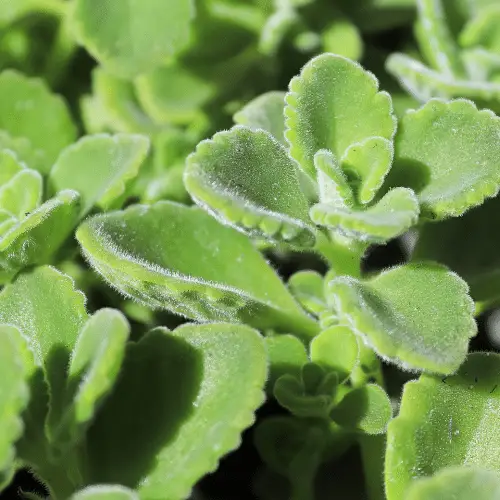
Caring For Cuban Oregano
These are fast growing plants which will quickly outgrow their containers so pruning is going to be necessary but the plant is pretty self sufficient and requires only minimal care beyond this.
The plants are drought tolerant so only require watering about once a week and we would advise using a good, general all-purpose fertilizer about once a month at the most but this is certainly an issue that you don’t need to stress over as the plants will still thrive if you feed infrequently. For more information on choosing the right fertilizer, check out our Vegetable Garden Fertilizer article or if you want to make your own have a look at our Homemade Organic Liquid Fertilizer article.
Cuban Oregano Pests & Diseases
Cuban Oregano plants can be susceptible to spider mites and mealybugs so you need to keep a watch for webbing or brown stippling.
If you do find you have a problem then Neem Oil is a good solution for dealing with these pests and further information can be found in our article on the Top 5 Best Insecticides For Vegetable Gardens.
Cuban Oregano Uses
As a succulent the plant makes an excellent ornamental both planted out in beds or in pots and the blooms are great for pollinators.
One of the main uses however is in cooking as the leaves are highly aromatic and impart delicious flavour. Fresh leaves can be used well in dishes like soups or stews but I would recommend preserving the Cuban Oregano leaves by drying them out. This will make them easier to store and use.

Care needs to be taken as although the flavour is delicious, it can be quite overpowering in comparison to other oreganos.
The plant has also been used extensively over the years in traditional medicines to treat a range of ailments.
Cuban Oregano FAQ’s
Is Cuban Oregano the same as Mexican Oregano? In a word, No. Cuban Oregano belongs to the Lamiaceae family whilst Mexican Oregano belongs to the Verbenaceae family and neither of them are truly Oregano. We have a detailed article on Growing Mexican Oregano which you may find helpful.
Is Cuban Oregano Edible? Absolutely, in fact it’s quite delicious. The flavour profile is very similar to Mediterranean Oregano with a hint of mint in there too but it’s quite strong so you won’t need as much as you would if using Mediterranean Oregano.
